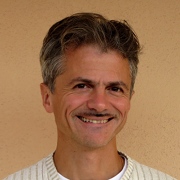The Virtual Planet project aims at developing tools that will enable real-time 3D exploration of large scale phototextured terrain datasets acquired with new generation remote sensing technology. The project will tackle the following technological challenges: rapid preparation of terrain databases from multiple sources; dynamic loading of massive high-resolution terrain databases; 3D real-time rendering of geographical databases; interoperation with existing GIS software; software extensibility based on an open architecture. CRS4 is the partner in charge of the study and development of multi-resolution terrain rendering components. CRS4 and ISTI/CNR have proposed a new technique, called Batched Dynamic Adaptive Meshes (BDAM), based on a paired tree structure: a tiled quadtree for texture data and a pair of bintrees of small triangular patches for the geometry. Both preprocessing and rendering exploit out-of-core techniques and fully harnesses the power of current graphics hardware. Recent benchmarks indicate that the BDAM technique outperforms state-of-the-art techniques based on hierarchies of right triangles, currently regarded as the most efficient for continuous level-of-detail rendering.
Chiudi






